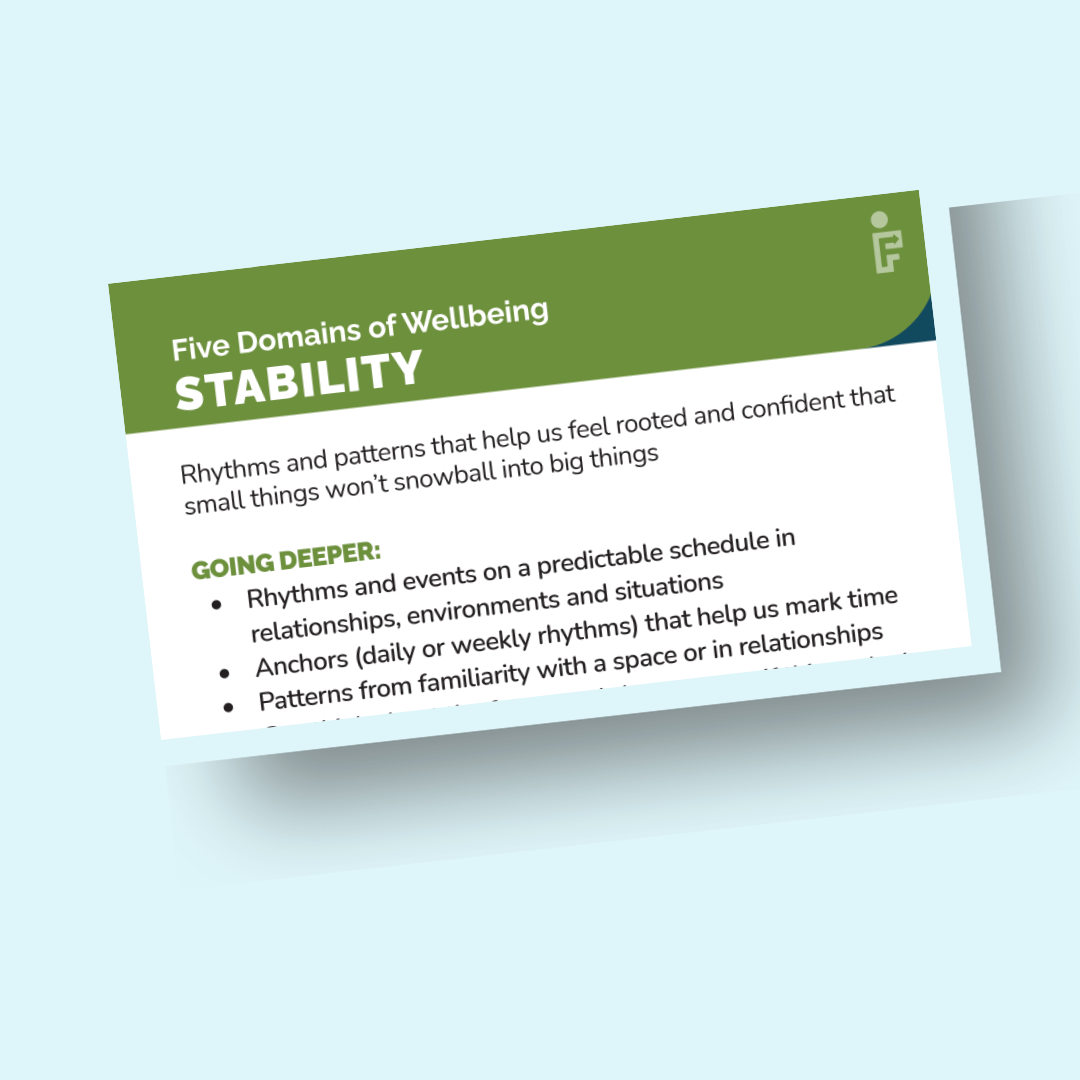
These reminder cards support understanding of the Five Domains of Wellbeing and tradeoffs.

This example highlights the assets and challenges refugees have faced before coming to the United States and after coming to the United States through the lens of the Five Domains of Wellbeing.
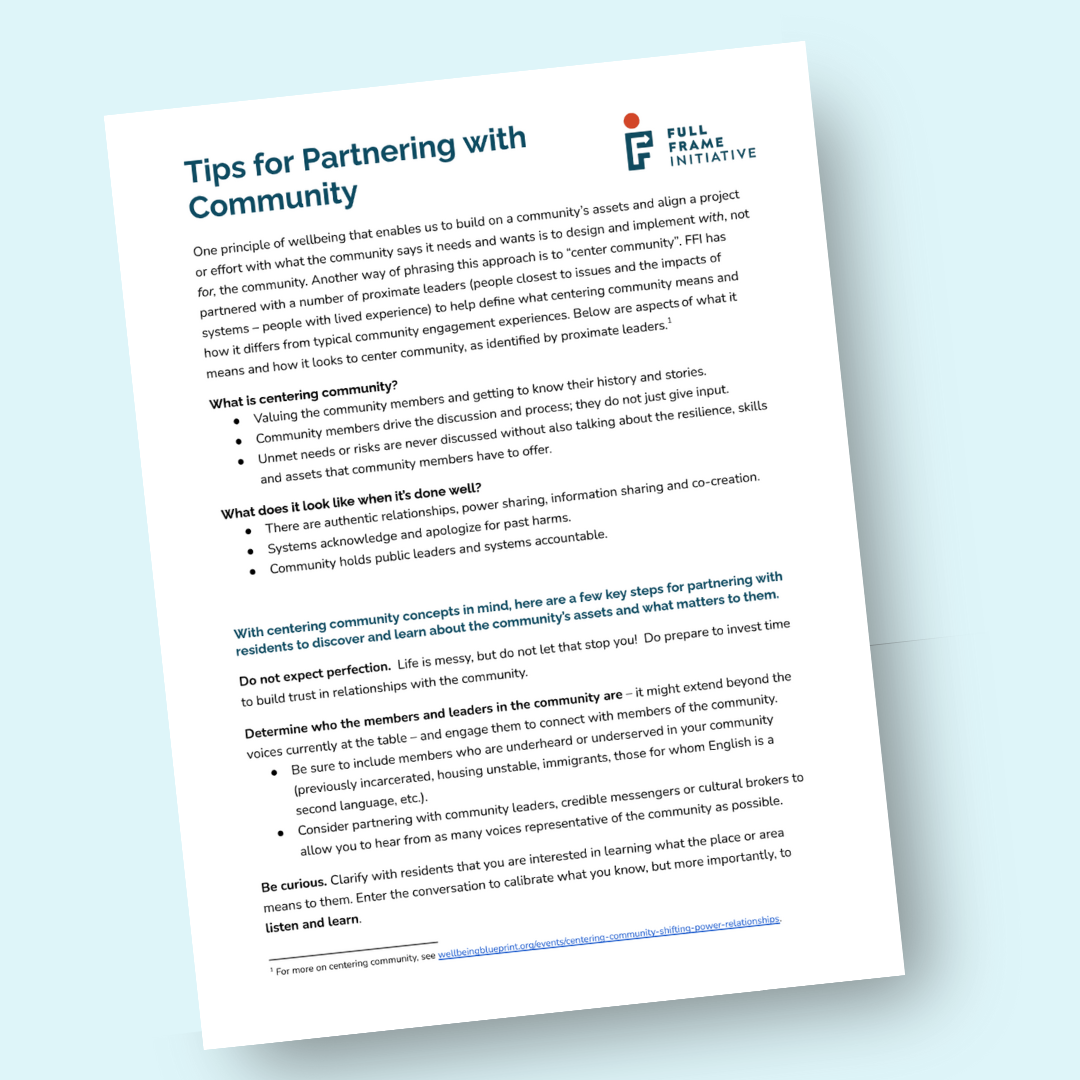
This document offers tips for centering community in decision-making through deeper, more meaningful partnerships beyond traditional engagement methods.
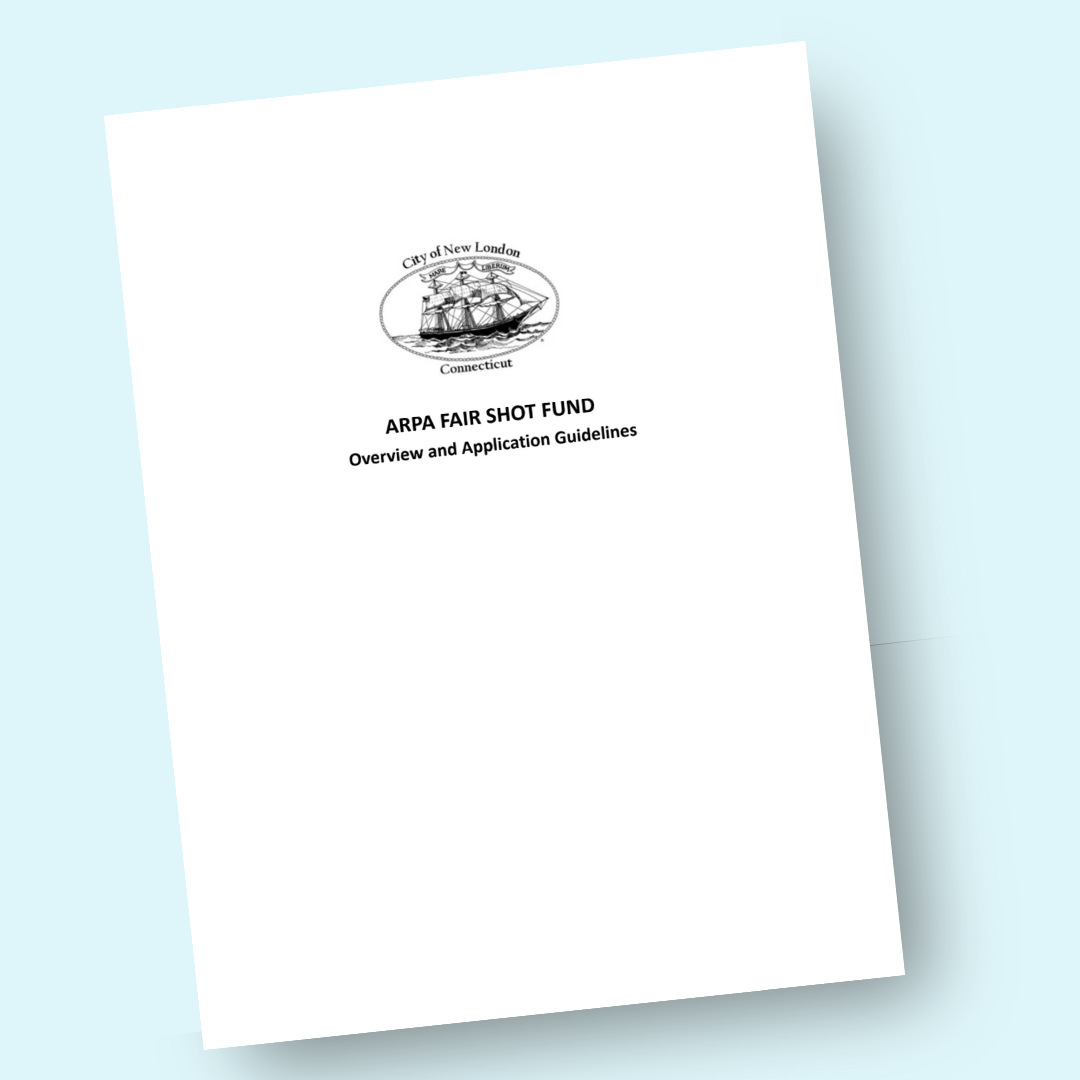
This example highlights how the City of New London integrated wellbeing into its procurement process to promote equity through RFPs.
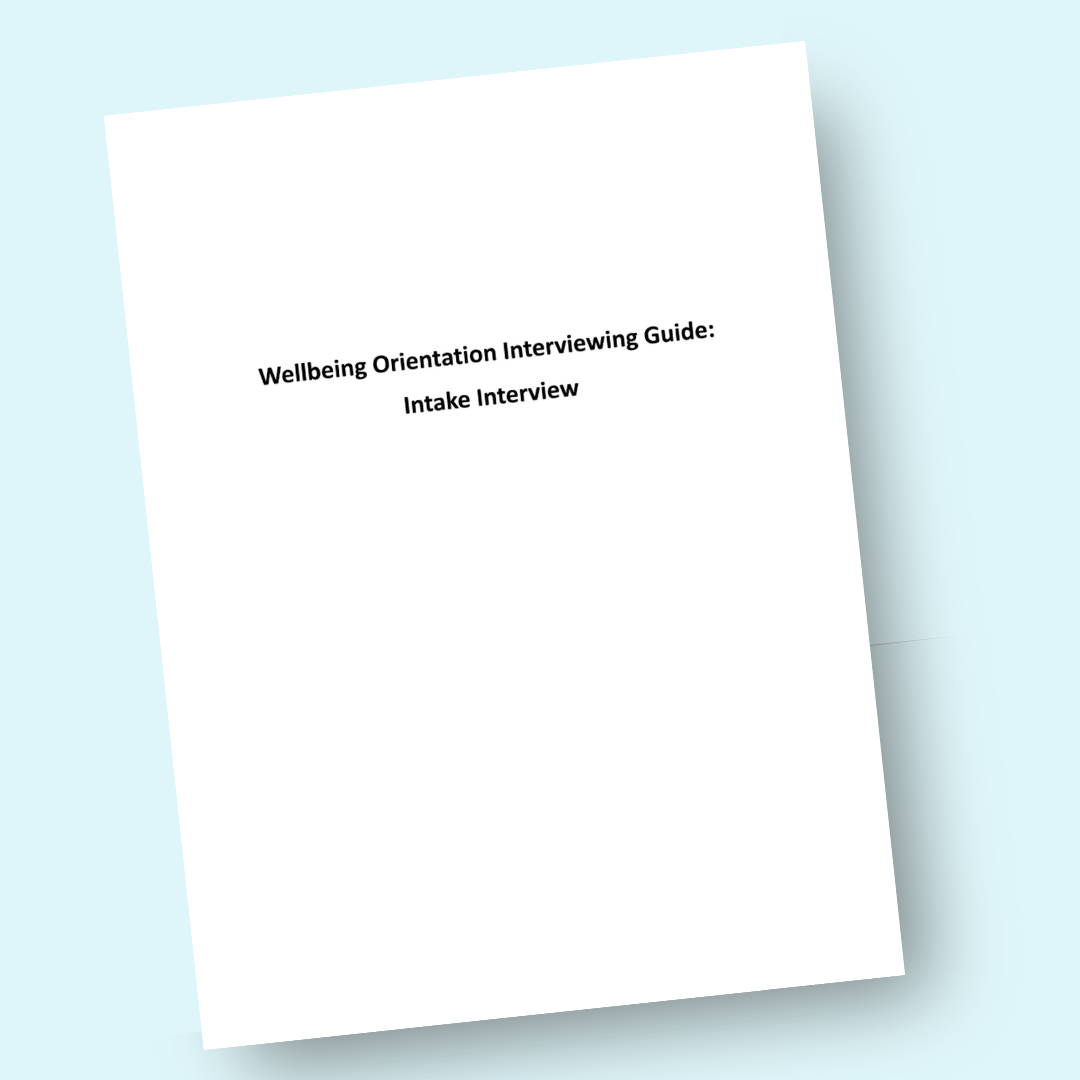
This guide offers conversational intake questions to uncover a fuller picture of individuals' wellbeing assets and tradeoffs, moving beyond a traditional Q&A approach.

This resource introduces Community Wellbeing Asset Mapping as a strengths-based approach that highlights what’s working in a community to support more accurate, wellbeing-centered decision-making.

This guide helps you assess risks and when to escalate them.

Even in short interactions, we can pay attention to tradeoffs and wellbeing.

This tool can help evaluate the tradeoffs for an individual who doesn't have a place to stay for the night.
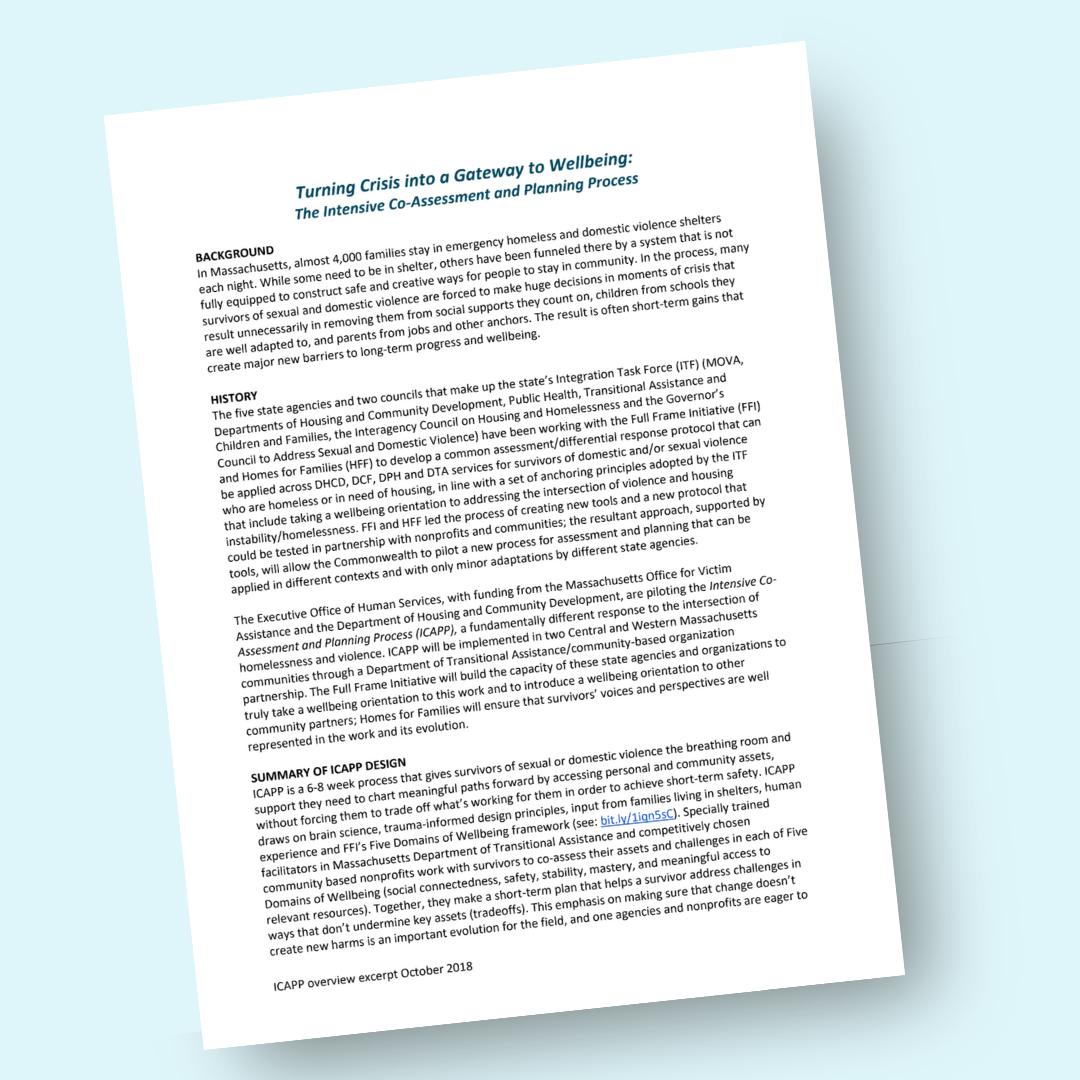
This example highlights how the wellbeing framework can be used to support survivors of domestic violence and sexual assault shift from short-term safety planning to longer-term wellbeing planning.
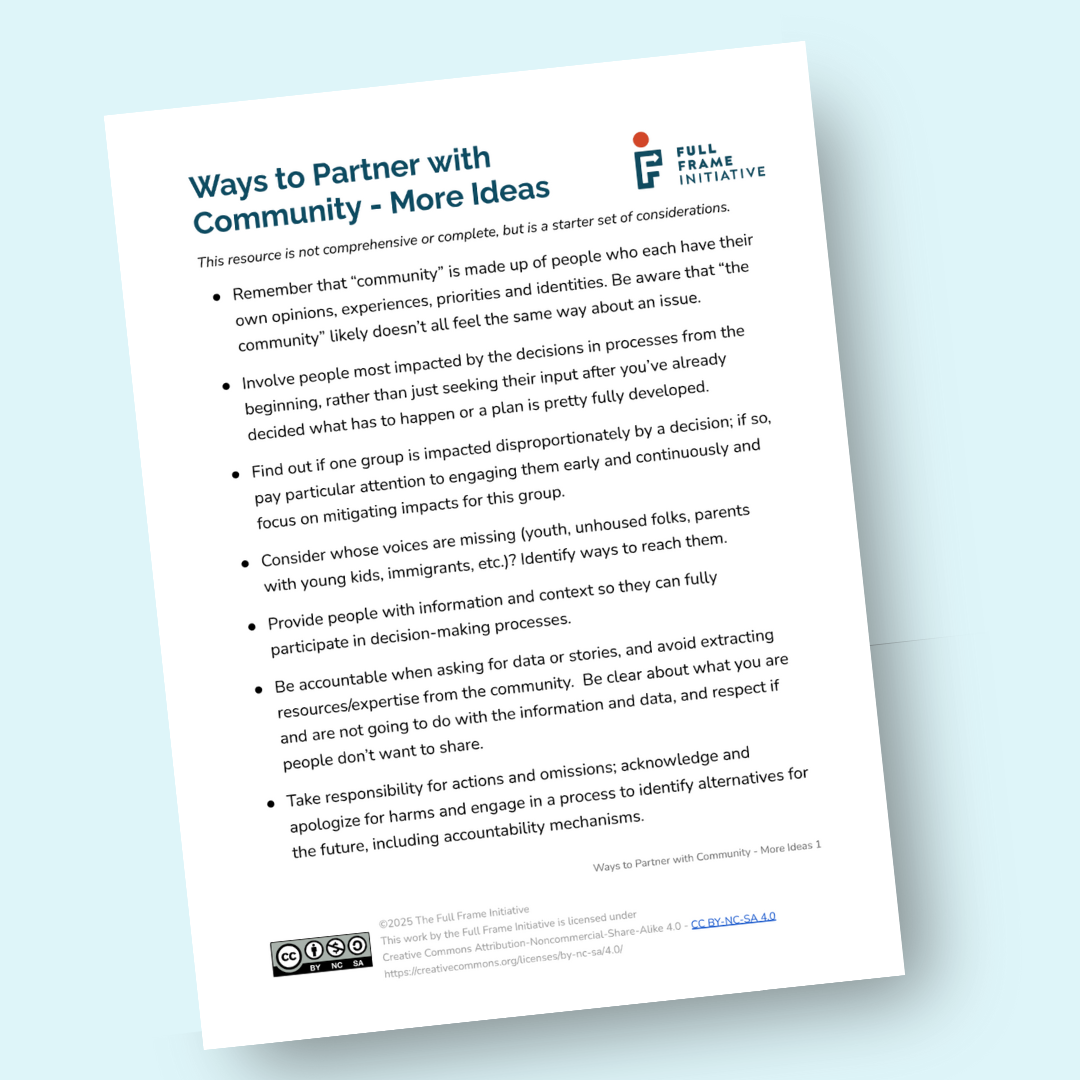
This resource offers ideas for how to partner with community members in more meaningful and effective ways.
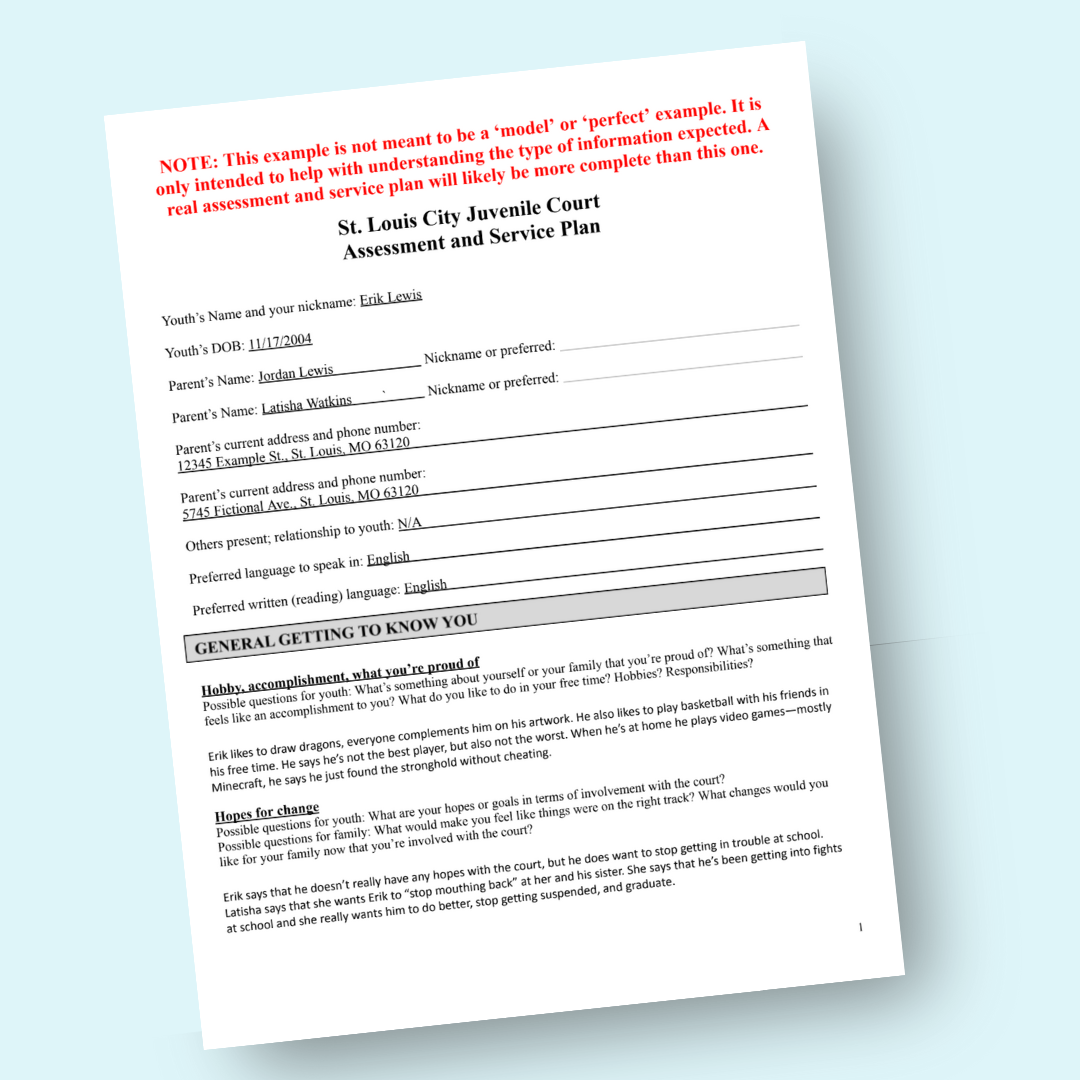
Example of how the Five Domains of Wellbeing can be examined during assessment and incorporated into treatment or action plan.